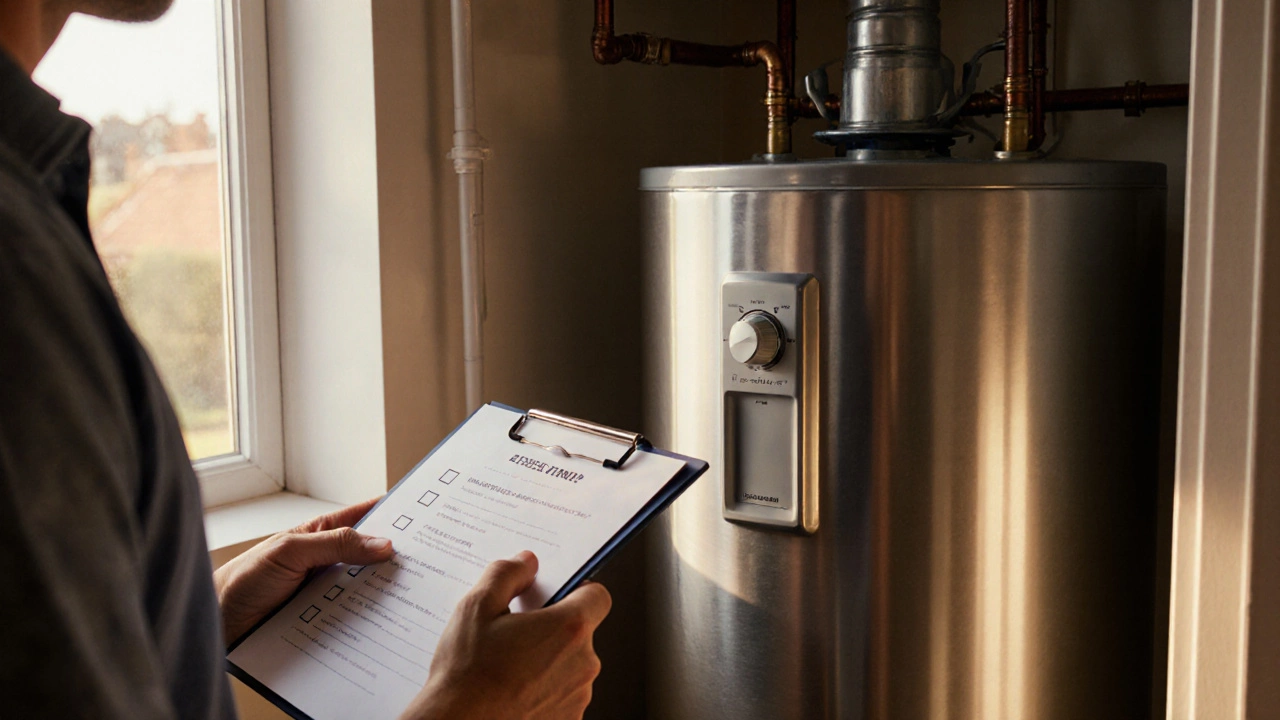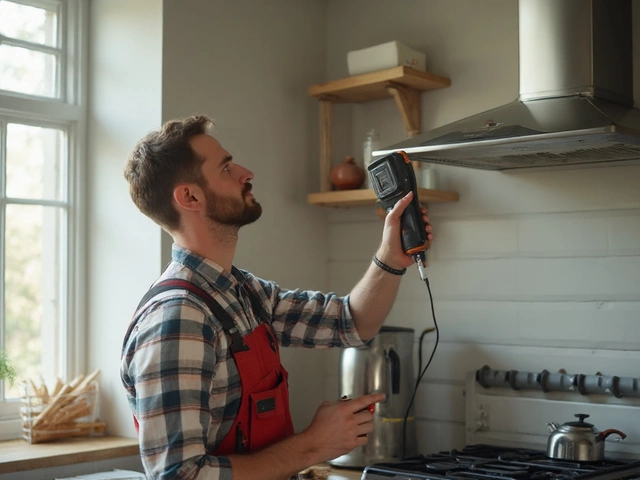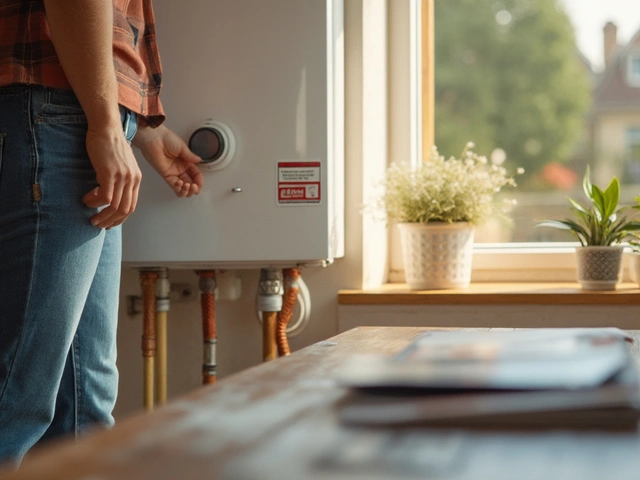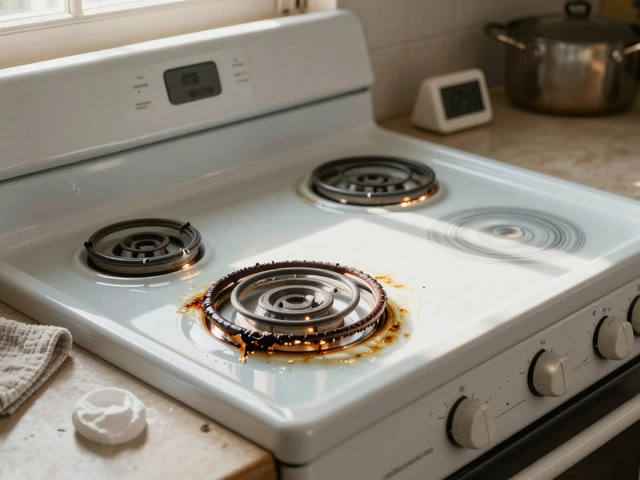Water Heater is a household appliance that heats water for bathing, cleaning, and heating purposes. Keeping it in good shape is cheaper than calling a plumber after a leak or a cold shower surprise. Below is a no‑fluff guide that walks you through every task you should do, when you should do it, and when to call a professional.
Why regular maintenance matters
Every year a typical water heater maintenance routine can extend the unit’s life by 2-3 years, improve energy efficiency by up to 15 %, and cut the risk of sudden failure. Sediment, corrosion, and thermostat drift are the three silent killers that show up gradually. When you ignore them, the heater works harder, the electricity or gas bill climbs, and the tank may eventually burst.
Annual maintenance checklist for conventional tank heaters
- Turn off power or gas, then shut the cold‑water supply.
- Drain the tank to remove sediment (see steps below).
- Inspect the Anode Rod a sacrificial metal rod that protects the tank from corrosion for wear and replace if more than 6 inches are exposed.
- Test the Pressure Relief Valve (PRV) a safety valve that releases excess pressure to prevent tank explosion by lifting the lever; water should flow steadily.
- Check venting (gas units) for blockages, soot, or rust.
- Verify thermostat setting-120 °F (49 °C) balances comfort and energy use.
How to flush a tank water heater
- Attach a garden hose to the drain valve at the bottom of the tank.
- Open the valve and let the water flow into a bucket or floor drain. Expect brownish water for the first few minutes.
- Close the valve, remove the hose, and refill the tank by opening the cold‑water supply.
- Turn power or gas back on and check for leaks.
Flushing removes Sediment Buildup accumulated mineral particles that reduce heating efficiency. If you live in hard‑water areas, consider doing this twice a year.
Gas versus electric: what changes?
Gas heaters add two extra tasks: cleaning the burner assembly and inspecting the Flue Vent the exhaust pipe that carries combustion gases out of the house. Use a soft brush and mild detergent; never spray water on a live burner. Electric units skip the vent check but require you to examine the Heating Element the coil that converts electricity into heat for scaling or cracks.
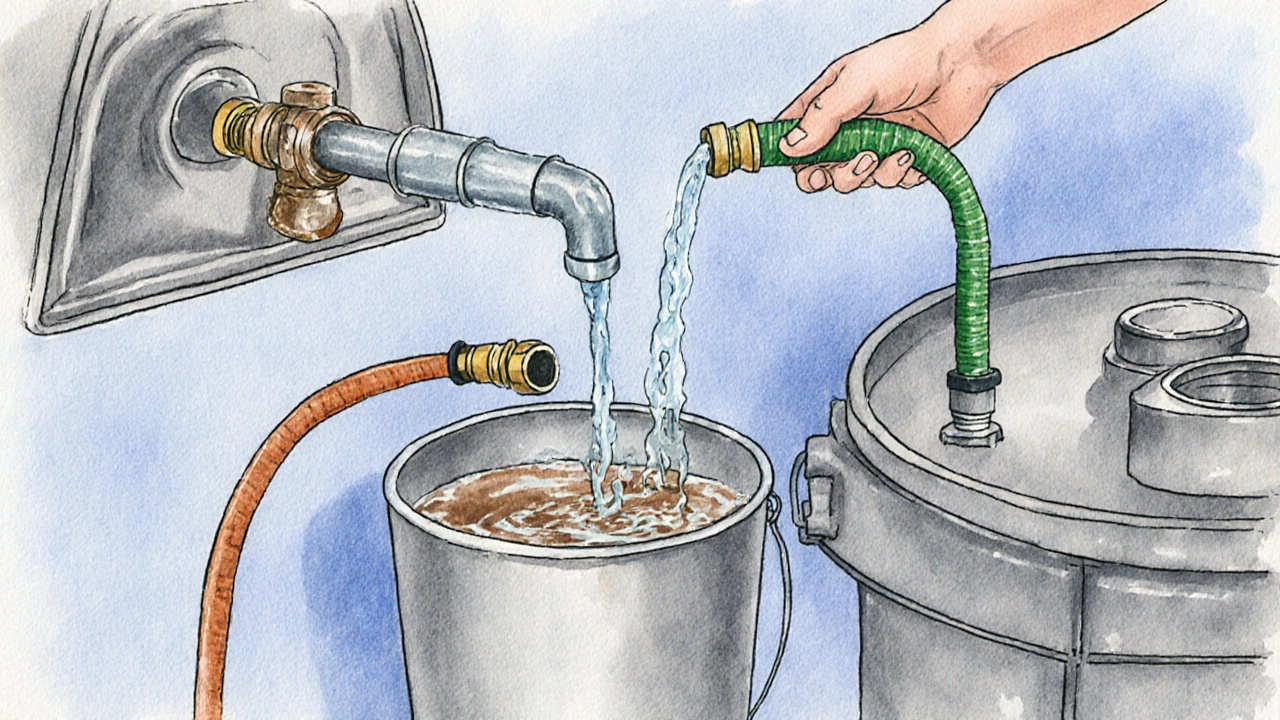
Maintenance for tankless (on‑demand) water heaters
Tankless models have fewer moving parts but need regular descaling because water flows constantly over the heat exchanger.
- Run a commercial descaling solution through the unit every 12 months (more often in hard‑water zones).
- Clean the inlet filter-usually a mesh screen-once a year.
- Check the Flow Sensor a component that detects water flow to trigger heating for debris.
- Inspect the venting (for gas‑tankless) for carbon buildup.
Seasonal tweaks and special considerations
During winter, especially in colder climates, watch for the "cold water sandwich" effect: a burst of cold water when you first turn the tap on, caused by hot water sitting in the pipes cooling down. Insulating hot‑water pipes reduces this and saves energy.
If you have a Expansion Tank a small bladder tank that absorbs increased water volume when heated, check its pressure annually. Low pressure can cause the water heater to trip safety switches.
DIY vs. professional service: how to decide
Simple tasks-draining, filtering, visual inspections-are safe for most homeowners. Anything involving gas lines, electrical wiring, or vent cleaning should be handled by a licensed technician. A professional can also perform a full Energy Factor (EF) a rating that measures the overall efficiency of a water heater test, which tells you whether it’s time to replace the unit.
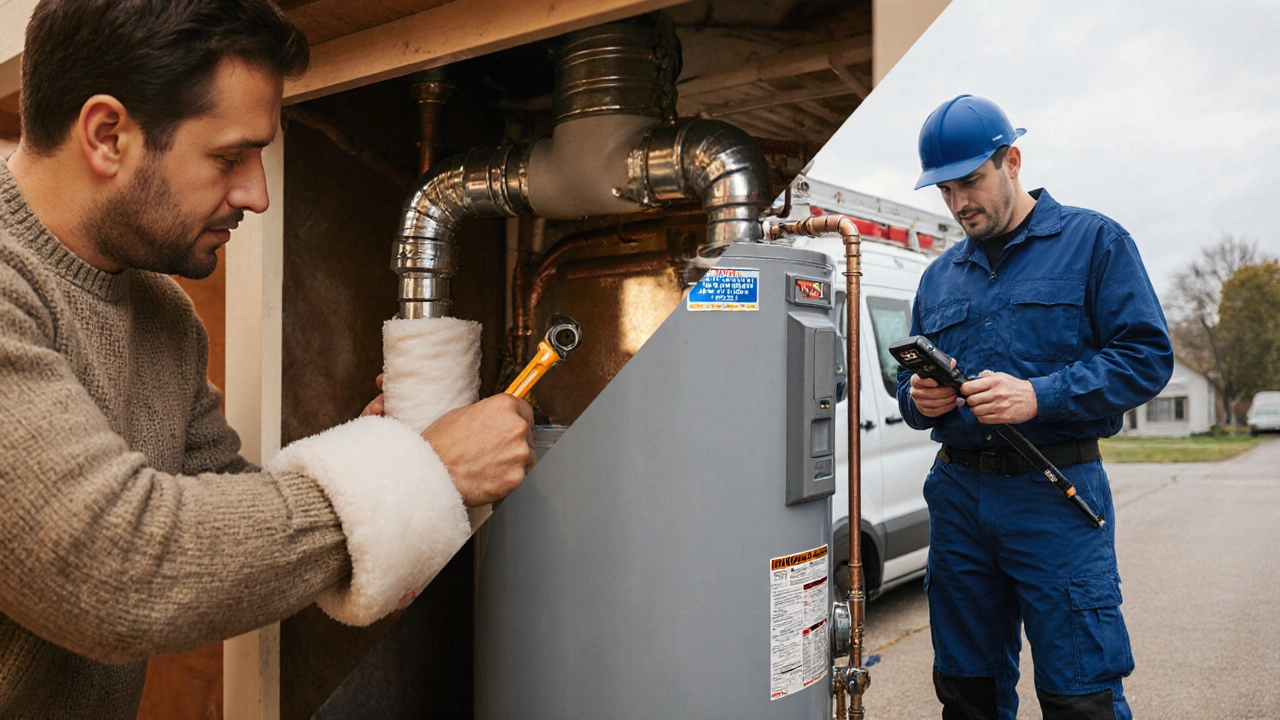
Cost outlook and frequency guide
| Task | Tank Heater | Tankless Heater | Typical Cost (USD) |
|---|---|---|---|
| Drain & flush | Yearly | N/A | $0‑$30 (DIY) or $80‑$120 (pro) |
| Anode rod check/replacement | Every 2‑3 years | N/A | $30‑$80 |
| PRV test | Yearly | N/A | $0‑$25 |
| Burner/vent cleaning | Yearly (gas) | Yearly (gas‑tankless) | $50‑$150 |
| Descaling | N/A | Every 12 months | $40‑$100 |
| Filter cleaning | N/A | Yearly | $0‑$20 |
Skipping a task can add $200‑$500 in emergency repair bills later, so think of maintenance as insurance.
Common pitfalls to avoid
- Using harsh chemicals on the PRV - it can corrode the valve seat.
- Re‑installing the anode rod upside‑down - the rod won’t protect the tank correctly.
- Neglecting the vent pipe - a blocked vent can cause carbon monoxide buildup.
- Relying on visual checks only - temperature differentials often reveal hidden scaling.
Quick takeaways
- Drain and flush the tank at least once a year.
- Inspect the anode rod and replace it before it’s more than 50 % consumed.
- Test the pressure relief valve annually; replace if it leaks or sticks.
- For tankless units, descale annually and clean the inlet filter.
- Call a licensed pro for any gas, electrical, or vent‑related work.
How often should I flush my water heater?
At a minimum, flush the tank once a year. In areas with hard water, flush twice a year to keep sediment from building up.
When must the anode rod be replaced?
Replace the rod when more than half of its length is exposed or when you see a powdery orange residue inside the tank.
Can I clean the pressure relief valve myself?
Yes, you can lift the test lever to flush out debris, but if water continues to drip afterward, replace the valve.
What does ‘cold water sandwich’ mean and how do I stop it?
It’s a short burst of cold water that follows hot water because the pipe lines cool while you’re away. Insulating hot‑water pipes and installing a recirculation pump eliminate the problem.
Should I service a tankless water heater more often than a tank model?
Tankless units need annual descaling and filter cleaning, especially in hard‑water regions. Traditional tanks rely more on flushing and anode checks.
